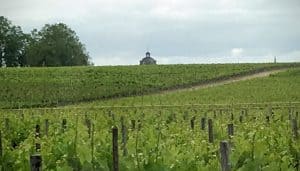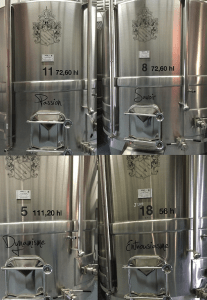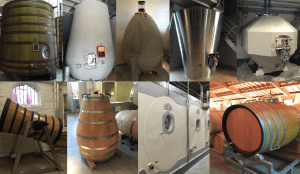When a friend of mine was pregnant, we threw her a baby shower. We figured that if Mama couldn’t drink, then neither would we. So we hit the local liquor store to buy an assortment of non-alcoholic wines to give them a taste test to see which, if any, were actually tolerable.
Much to our surprise, we actually found them to be not that bad. Well except for one that was just hideous.
How do you get Non-Alcoholic wine?
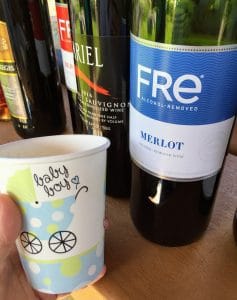
Wine Folly gives a good breakdown, complete with illustrations on the process, but essentially non-alcoholic wine starts out as regular, alcoholic wine with the alcohol later removed. This process is not 100% exact which is why these wines can’t be sold to minors (and why we didn’t let our mama-to-be have any). If you look carefully, you will see that the labels note that they contain less that 0.05 or 1% alcohol. Technically, these are “alcohol removed” wines rather than non-alcoholic wines.
The two most popular methods to remove the alcohol are reverse osmosis (used by Ariel and Sutter Home Fre with the later using a spinning cone for the process) and vacuum distillation (used by St. Regis).
The Line-up
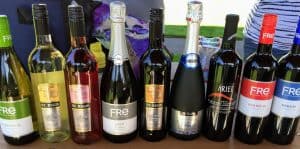
Sutter Home Fre is made by Trinchero Family Estates. In addition to Sutter Home, Trinchero also makes Menage a Trois, Charles & Charles, A3 wines, Bandit, Joel Gott, Sycamore Lane and many more. In the Sutter Home Fre brand they make a non-alcoholic sparkling wine, Chardonnay, Moscato, White Zinfandel, Merlot and Red blend. We were able to taste all but the Moscato and White zin.
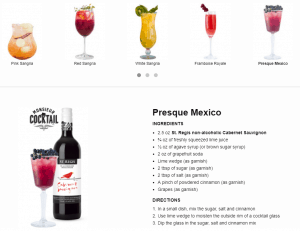
Both Sutter Home Fre and St. Regis highlight lots of “Mocktail” recipes on their websites that are worth checking out.
St. Regis is a Canadian brand produced by I-D Foods Corporation. The wines are made in Europe with the Cabernet Sauvignon coming from Spain, the sparkling Brut from France and the Chardonnay and Shiraz rose from the south of France. They also make a sparkling Kir Royal from France that we did not get a chance to taste.
Ariel is owned by J. Lohr Vineyards & Wines with their website claiming that they are sourcing their fruit from the same 3700 acres of vineyards used by J. Lohr in the Central Coast of California. They also claim to be the “World Best Dealcoholized Wine” with the website touting a gold medal won more than 30 years ago at the 1986 Los Angeles County Fair that saw their Ariel Blanc competing against alcoholic wines. While they make a non-alcoholic Chardonnay, we only had an opportunity to try the Cabernet Sauvignon.
The Verdict
First off, with all these wines you can certainly tell that they aren’t the real deal. Besides the muted aromas, the biggest giveaway is the mouthfeel with all the wines tasting very watery and light. The one exceptions were the two bubbles which I’ll discuss below.

Both of these were surprisingly good.
In tasting through the wines, the “house style” of the two brands that we had multiple examples of–Sutter Home Fre and St. Regis–quickly became apparent. The Sutter Home Fre was the sweeter of the two but not sugary sweet. In fact, they reminded several of us of the low-sugar kids fruit juices that you get at places like Whole Foods such as Honest Kids. In fact, the similarity of the Sutter Home Fre wines to the Honest Kids fruit juices were quite remarkable since none of the Fre wines had any real “winey” notes like oak. Even though these wines tasted like “healthy kids fruit juices”, I would never recommend letting kids try them.
The St. Regis wines tasted drier and more wine-like but they also tasted noticeably manipulated with the use of oak chips. Both the Chardonnay and Cabernet Sauvignon smelled like “real” Cab and Chard but they smelled like real examples of mass commercialized under $10 wines made by large volume producers like Trinchero and J. Lohr which was a bit ironic.
So not a fan of the Ariel.
The worst of the bunch, by a loooooooooooooooooong ways was the “World’s Best Dealcoholized Wine” Ariel. It tasted like stewed fruit cooked in plastic Croc shoes. I had to (unfortunately) revisit it several times to try and discern if the bottle was flawed but it didn’t tick off any of the typical wine fault red flags. I couldn’t detect volatile acidity (VA) and overt oxidation notes that typically go with “stewed fruit” flavors–like if the wine had been exposed to excessive heat such as being in the trunk of a car. Plus the cork and bottle looked fine with no bulging or seepage.
While the plastic Croc notes seem in line with some of the 4-ethylphenol (4-EP) “band-aid” Brett aromas, it definitely was more plastic shoe than band-aid. The wine also didn’t have the mustiness associated with TCA. Though the threshold for determining cork taint is heavily influenced by alcohol content so who knows if the reduced alcohol was doing something weird.
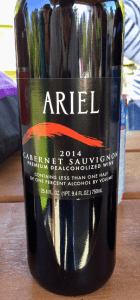
The one wine from this tasting that I would encourage people to avoid.
Ultimately, I can’t completely say that the Ariel Cabernet Sauvignon was flawed or not but I can say that this particular bottle was one of the worst things I’ve ever tried. If this was a blind tasting, I would have pegged it as a really bad and light bodied Pinotage–and that would have been the nicest thing I could say about it.
Perhaps, again, it was just this one bottle but the 2 star rating and reviews on Amazon hint that perhaps it wasn’t. A 2008 review on CNET described a tasting of the Ariel thusly:
There were three reds, including a Cabernet Sauvignon and a Merlot, that were so weak and tasteless they were essentially undrinkable. The same was true of the Chardonnay. — Steve Tobak, August 23rd, 2008, CNet
Looks like not much has changed since 2008 since I would also describe the Ariel Cabernet Sauvignon as ‘undrinkable’.
In Summary
But, happily, that was the only one. While the other wines certainly weren’t spectacular, they were definitely drinkable and it really all comes down to personal preference. If you want something on the Honest Kids’ fruit juice side, go with the Sutter Home Fre. If you want something more “wine-like” (i.e. oaky) then go with the St. Regis.
But the stars of the show were the two non-alcoholic sparklers. Both the Sutter Home Fre and St. Regis Brut were actually quite drinkable and pleasant. They essentially tasted like drier versions of Martinelli’s sparkling apple ciders. The bubbles followed the trend of the house styles for each producer. The Sutter Home Fre was slightly sweeter and more “Martinelli-like” while the St. Regis was drier and more “wine-like” with even a bit of toastiness.
If I was having a party, I would happily buy both sparklers as a non-alcoholic options for adults. As for the others, I would be interested in exploring some of the mocktail recipes found on their sites. They weren’t bad on their own (except for the Ariel) but not anything I would be eager to try again.
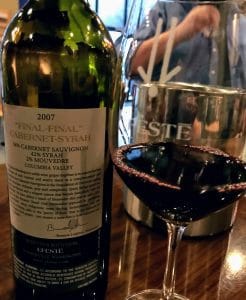 A few quick thoughts on the 2007 Efeste Final-Final red blend from the Columbia Valley.
A few quick thoughts on the 2007 Efeste Final-Final red blend from the Columbia Valley.







